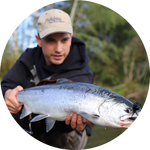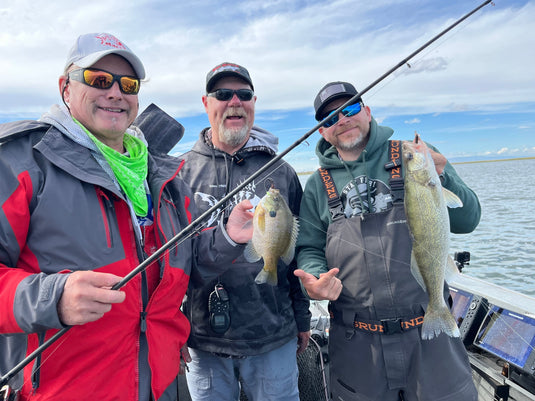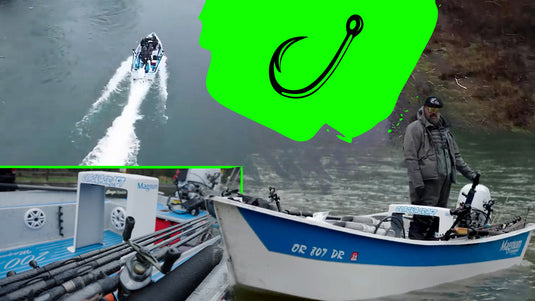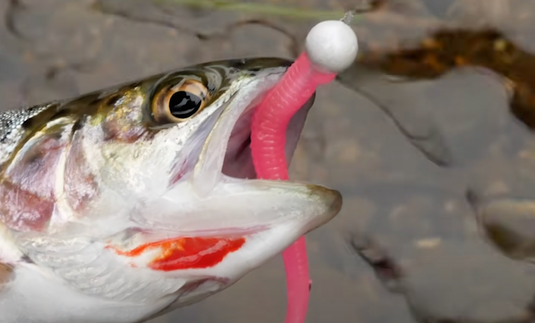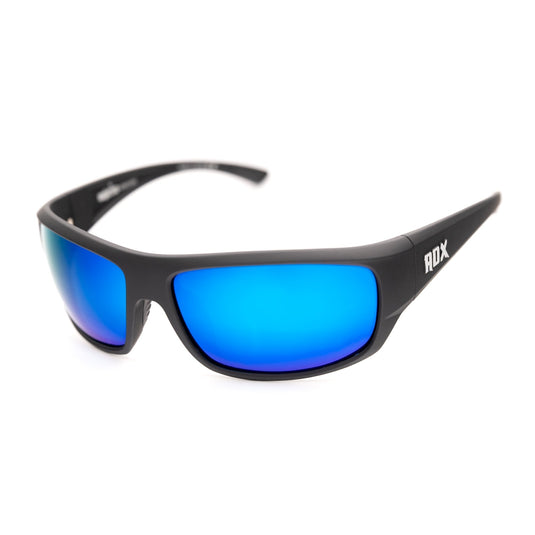Drop Shotting - Japanese import? or ... tried and true technique!

 Is Drop Shotting, Japanese? Soon the hot action of PreSpawn, Spawn and Post Spawn will give way to hot fishing in waters that have a from run off, cleared up and stabilized into traditional warm water Bass fishing conditions. With that warm weather will come additional pressure on our favorite lakes and river backwaters.
Is Drop Shotting, Japanese? Soon the hot action of PreSpawn, Spawn and Post Spawn will give way to hot fishing in waters that have a from run off, cleared up and stabilized into traditional warm water Bass fishing conditions. With that warm weather will come additional pressure on our favorite lakes and river backwaters.
Along with water-skiers, jet-skiers, kayakers, canoers and swimmers will come swarms of fair-weather fishermen, straining the water with every kind of Bass bait, rustling, thumping and drumming on the insides and outsides of their boats with nets, paddles, tackle-box lids, anchors, chains…..You name it. They will roar right up to the fishing hole and slap it with their wakes, or plow right through your special spots with their electric motors, casting shadows and thrashing the water until big, wary fish just lock their jaws, sulk and refuse to even think about looking at your reaction-baits or any of even the most ‘realistic’ hard and soft-bodied presentations splooshed in front of them.
Even during premium fishing times, or whatever time you are able to squeeze into a trip to the water, fish go through periods of inactivity. Fishing pressure is not the only thing that makes them finicky. Barometric pressure changes, oxygen levels, pH conditions, temperatures, moon phases, bright light conditions, extremely clear water, heavy night-feeding, over-abundant prey…..All of these can influence the bite or ‘shut it down,’ to all appearances.
 Dave's Weights make excellent Drop Shot weights!
Dave's Weights make excellent Drop Shot weights!
The unusually high fishing pressure and small waters encountered by Japanese Bass fishermen resulted in a tactic called ‘Drop-Shotting.’ It was originally a very subtle, vertical presentation featuring a small weight at the end of light pound-test line and a hook well above the weight, secured by a Palomar knot. This caused the hook to stand out from the line, hook-point up, allowing it to make a perfect offering of a very small, nose-hooked finesse worm. With little to no movement by the fisherman, the suspended bait would make small, enticing movements that were the total opposite of other, flashier baits the fish were routinely exposed to. Pressured Bass went for the smaller, subtler offering when nothing else would tempt them.
Drop-Shotting took off in America when tournament fishermen discovered and duplicated the tactic in California’s clear-water lakes. Soon the technique was in use across the country. Good old American ingenuity, refinements, variations and improvements followed, but the overall effectiveness could not be denied, when presenting a small, wiggling bait off the bottom and just above vegetation or other cover, and right in front of the fish’s noses. Inevitably, someone figured out that you don’t necessarily have to fish vertically with the set-up. The Drop-Shot rig can be cast and retrieved along the bottom, again keeping the bait more visible while the weight drags along down below. This method can also be advantageous over more traditional presentations, or when a different look in a finesse presentation is called for.
Drop-Shot weights can be as simple as an ordinary split-shot crimped at the end of the line (More economical if you are in a rocky, snaggy area), a round sinker with a brass eye, or specific, made-to-order weights with handy line-grippers that do not require knots. Like Texas-Rig and Carolina-Rig weights, they are also available in tungsten. Being a lover of simplicity, I like the specialty Drop-Shot weights so I can just slip the end of my line in the holder and go, and I often opt for a pencil-lead style of weight when I want to cast and drag my rig. I keep the amount of weight no more than what is necessary to maintain contact with the bottom.
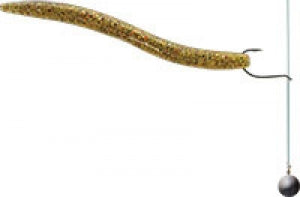 The Palomar knot is an absolute necessity for proper Drop-Shotting. It is best to practice tying the knot so that the point is riding up, not down. The accompanying picture shows how to tie the knot.
The Palomar knot is an absolute necessity for proper Drop-Shotting. It is best to practice tying the knot so that the point is riding up, not down. The accompanying picture shows how to tie the knot.
Even more important than weights, knots and hooks is your choice of line. Line that is too heavy, too visible or too buoyant will defeat the entire purpose of your Drop-Shot rig. I highly recommend the use of Flourocarbon line in a light pound test such as 8 lb or even lighter if you are in open water.. Flouro is virtually invisible, will transmit the most subtle ‘taps’ a wary fish might deliver, it sinks and stays down better than other lines, and it will not stretch. Many of the new Flourocarbons also cast very well, if that is the presentation you want. The pictures shown feature Flourocarbon line.
What bait to use? I like small, bi-colored Roboworms, small Power Worms, small minnow imitations, small Zipper worms, leech imitations, small lizards, even small crawdad patterns. Some folks do well with small tube baits as well. I have had some success with traditional six inch worms, especially ‘floating’ varieties. A talented friend of mine and President of Columbia River Bassmasters, Todd Martinez (http://www.columbiariverbassmasters.org/Home_Page.html) hand-pours some excellent finesse baits that work very well as Drop-Shot baits. Some of his creations have floating features too. You can contact Todd by e-mail at: Todd@trivertackle.com or go to his website: www.trivertackle. I know that some very good Drop-Shotters would not dream of using anything but a hand-poured finesse bait, just fyi!
While most of my good Largemouth Bass have typically come in water from 2 to 10 feet deep, I have scored on Bass close to 20 feet down when Drop-Shotting. Many Columbia River Smallmouth fishermen do well with the rig in even greater depths. The vertical presentation is probably the first one you should try. Try observing the bait while presented at shallow depths. Take note of what even the smallest movements do to the bait. You don’t have to jiggle or strum the line. Just normal water movement will activate your bait. At times adding a little twitch might help as well. Even a tiny hop might be effective. But mostly, Drop-Shotting is all about a very subtle presentation. Watch your electronics and try to place the bait at the appropriate height up from your weight, determined by where fish seem to be holding. Try the casting method too, when it appears that you are in the midst of a slow or pressured bite. I recommend having a specific rod for Drop-Shotting, spooled up with Flourocarbon line. It should be your most sensitive, most ‘telegraphing’ rod and I find 6′ 10” rods to be the best fit for this tactic, giving me my best shot at contact and concentration.
The Drop-Shotting method can take away your discouragement when you find highly-pressured waters. You are going to do something the fish are not used to, and offer them something in a way they have never seen. Even if someone has just thrashed your favorite water, give it some time to settle down after he moves on, then move in quietly and make the Bass an offer they can’t refuse. A small, easy meal that hovers in place, and appears lifelike and helpless can tip the scales in more way than one. This method can take you through times of fish inactivity and help you interest even the most highly-pressured fish. You may not cover water as quickly as you are used to, and it does take some self-discipline to slow down and relax a little, but it might just be a change of pace you can appreciate, especially when that big Bass bites!
Have fun experimenting with Drop-Shot rigs, keep your dry side up and your wet side down, and I’ll see you next time, when we talk a little about clubs and tournament fishing.
Your friendly Bass-fishing fanatic,
Bassmaster Bob
Get Drop-Shot Weights from http://www.davestanglefree.com



